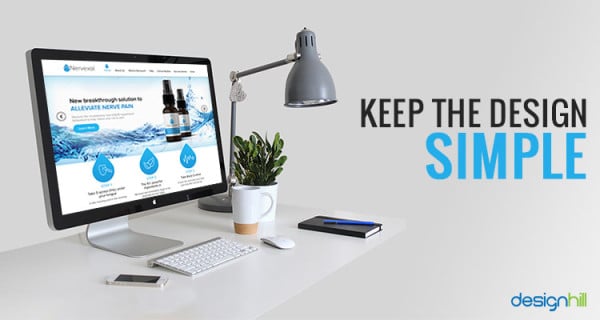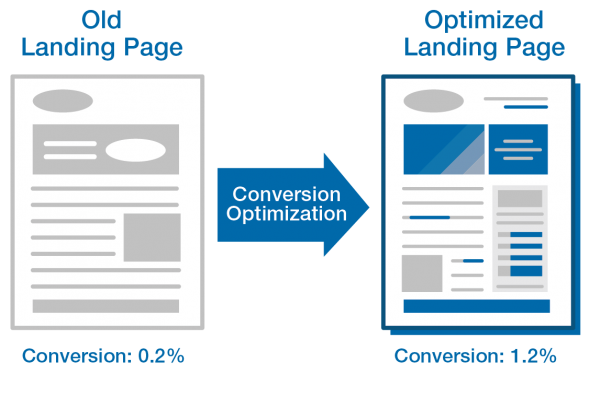How to Build an Impactful Website
A user-friendly website is the most effective and cost-efficient marketing channel for promoting small businesses, whether they are selling their product online or want to provide some information about their business and their contact details. 1
Before building a website, it is good to think about what one needs to achieve with the website. Careful consideration of the following points will help accomplish the website’s goals and make it more impactful.
Clearly Define your Goals
The organizational goal of creating a website must be in alignment with the purposes of the customer. A website having aligned organizational and customer goals will result in traffic, lead, and sales generation. Whereas if the plans don’t align, the customers will bounce from the site, not knowing why they should buy from the website. 2 It is pointless to build a website to sell a product or service that the customer does not want to buy. The most important metric to measure goal achievement is the Key Performance Indicator.
95% of marketers agree that “to truly matter, marketing analytics KPI must be tied to broader business goals.”
Create Domain Name with Proper Extension
The next step in building an effective website is creating a Domain name. 3 A good domain name should be short, memorable, and easy to spell, without any number or hyphen with the proper domain extension.
Less than a decade ago, there were fewer than 30 top-level domains 4 , now there are close to 2000
Select Hosting Service
Purchase scalable, secure website hosting service with good tech support. Other things to consider may be shared server, dedicated server or virtual private server, uptime, and loading speed.
A shared server hosting service is the cheapest as several users share server resources. A dedicated server is the most expensive as a whole dedicated server is available for a website. The virtual private server gives the best of both the shared and dedicated server as it has a partition of the server dedicated to a particular website.
Uptime is the percentage of time the server is available. Look for a hosting service with 100% uptime.
Loading speed refers to how fast a website loads. It depends on the location of the host server. The farther the server is from the user, the slower will be the loading speed of the website.
Look for the hosting service that offers CDN, which stands for Content Distribution Network. In a CDN, servers are located in geographically distributed locations, and the user is connected to the nearest server, thus reducing the loading time.
Pages that load within two seconds have an average bounce rate of 9%, while pages that load in five seconds see their bounce rates skyrocket to 38%. 5
Choose the Appropriate Content Management Service
Having selected the hosting service provider, the next step is to choose a Content Management Service. 6 With myriad service providers and a growing number of internal stakeholders, the task may appear daunting. But with a structured approach, selecting a CMS can be simplified. 7 Factors to consider are:
- evaluating current and future needs,
- finding an implementation partner if the company doesn’t have an in-house implementation team,
- writing a proposal request, and
- evaluating vendor response.
Incidentally, over 455 million websites use WordPress as of 2021. 8 On the other hand, Drupal is deployed more and more in e-governance projects. 9 &10 &11 Adobe Experience Manager and Liferay are strong contenders to Drupal in Enterprise application space. 12 Another criteria for choosing a CMS is its popularity. 13 &14 Certain domains such as educational institutions or media establishments pick their CMS based on the specificity of task at hand. 15 & 16

Keep the Design Simple
By simple design, it doesn’t mean that the website should not have any images or colours. On the contrary, a simple design website may have images and colours that should lead the visitor to call on the action. Studies after studies have shown that simple, uncluttered websites have a higher conversion rate. 17 Following are the attributes of a simple design:
- user-friendly,
- easy to navigate,
- fast download,
- minimalistic design,
- mobile-friendly,
- easier to maintain,
- google SEO friendly, and
- higher conversions.
Simple design concepts should especially be applied to the landing page in particular and the whole website in general.
75% of people base the credibility of a business on how their website looks. 18

Landing Page Optimization
Landing page optimization refers to the improvement in elements of a website to increase conversions. A landing page is specially designed to generate sales and capture leads. Landing pages are the leading destination of paid marketing campaigns, and a lot of money and resources are spent driving traffic to these pages. Optimizing a landing page ensures the highest conversion from visitors arriving at the landing page. 19
Critical components of landing page optimization are:
- limiting action on the landing page,
- prominently displaying a clear description of business and contact details,
- adding testimonials,
- enticing customers with offers for their contact information,
- decreasing page load time, and
- search engine optimization.
Smartphones held a 63% share of all business website visits. 20
Regularly Create and Publish Customer-Oriented Content
Businesses constantly invest in content marketing because it has proven a resounding success. 21 The benefits of consistently creating and publishing unique customer-oriented content are:
- audience retention,
- raising brand awareness,
- lead generation and increased conversion,
- generating industry authority,
- higher SERP (Search Engine Result Page), and
- creating loyal brand advocates.
Content creation is a top priority for 80% of marketers. 22 Moreover, on average, content marketing accounts for26% of B2B marketing budgets.


